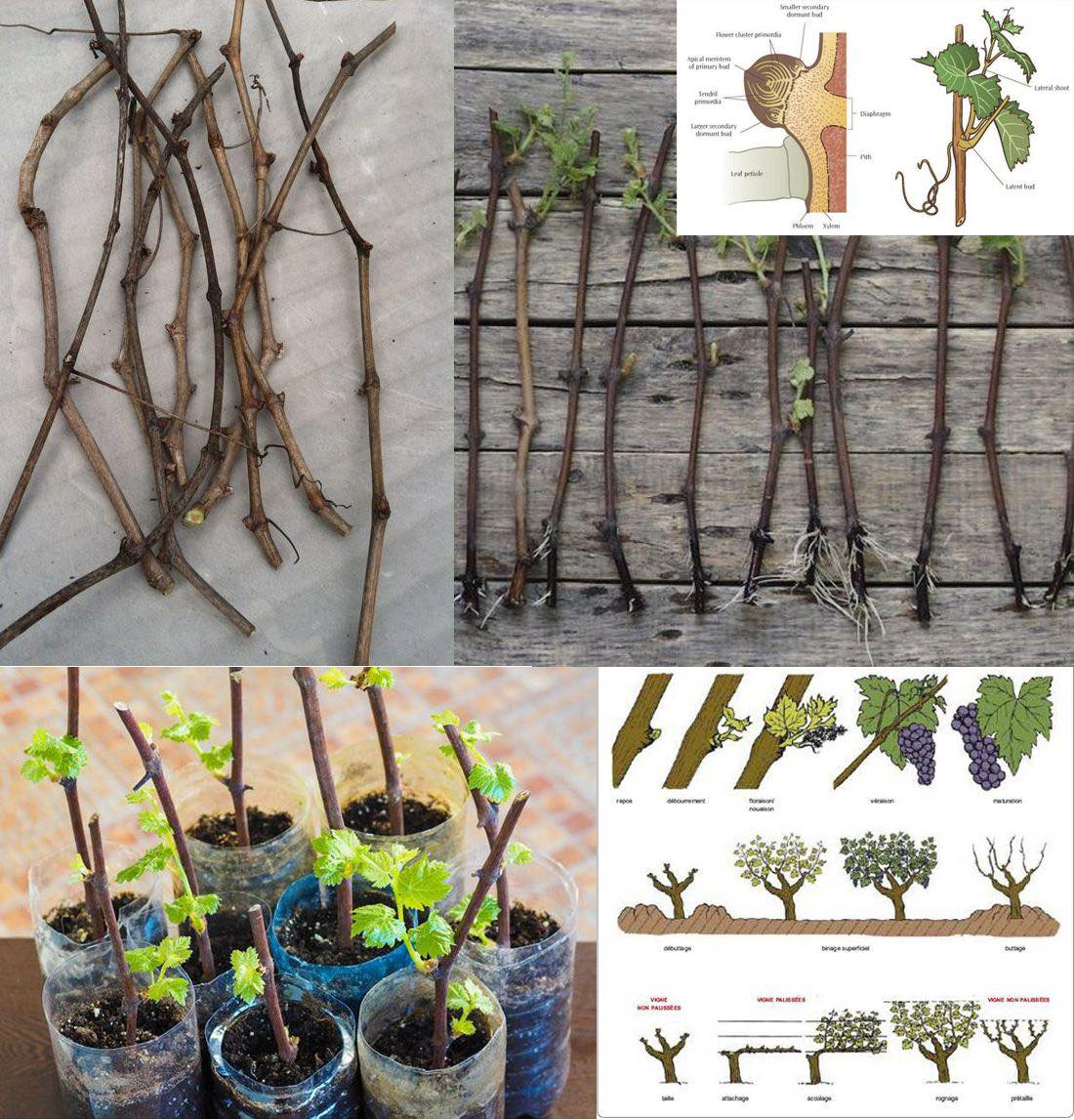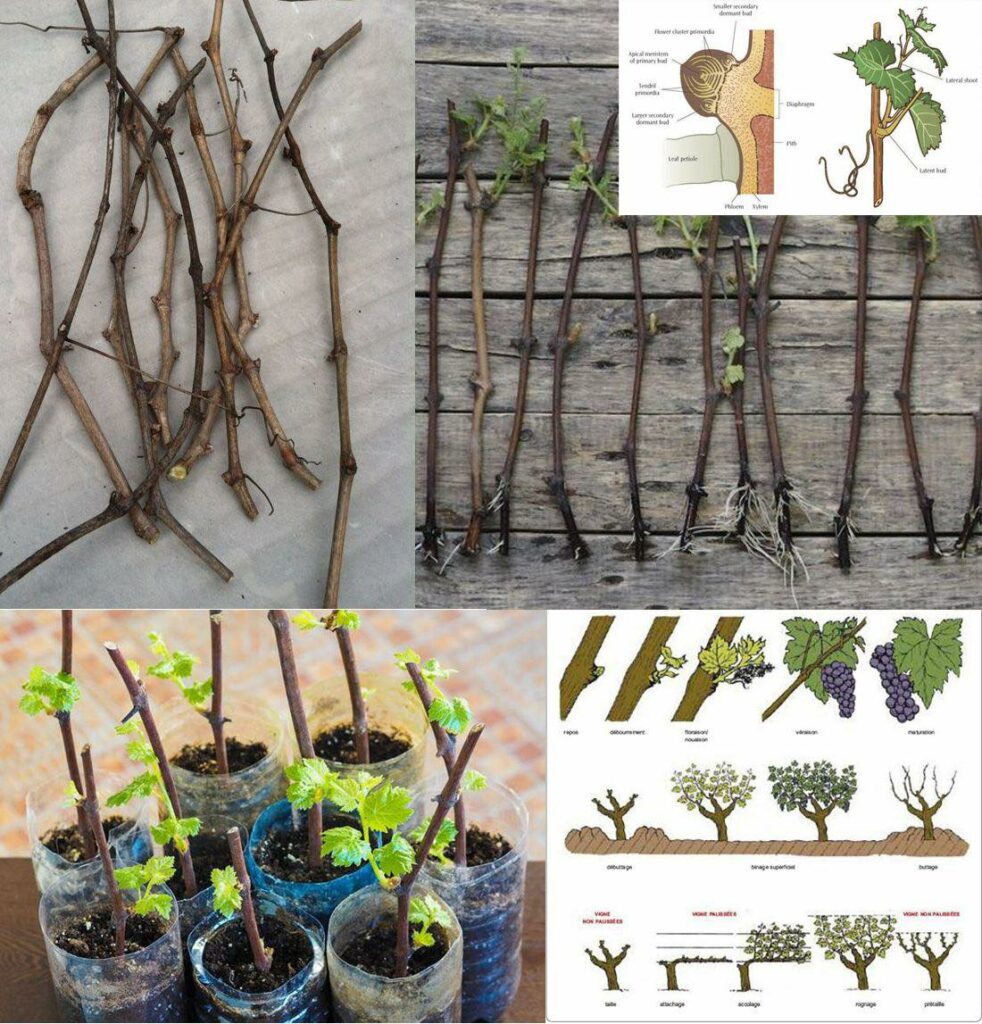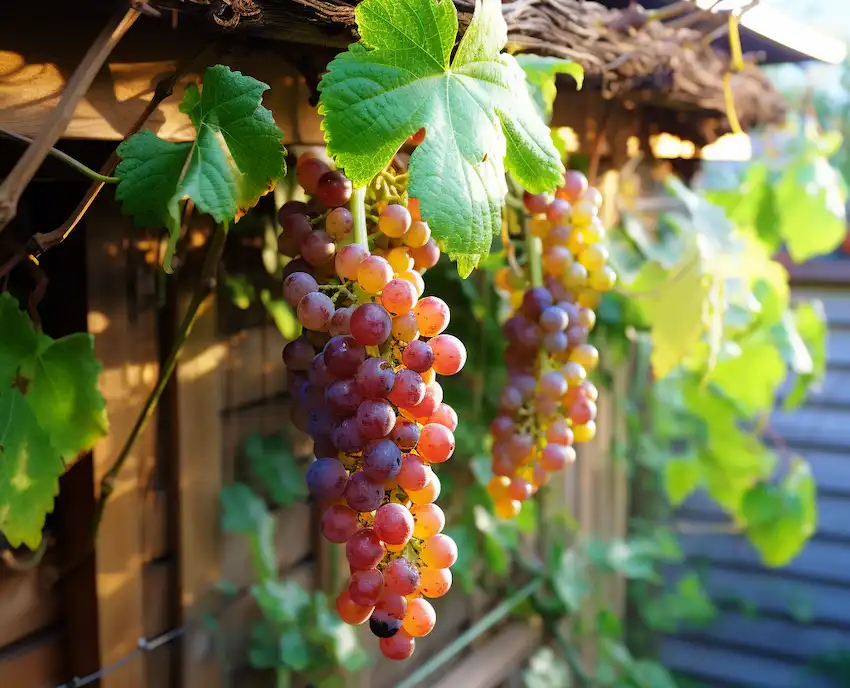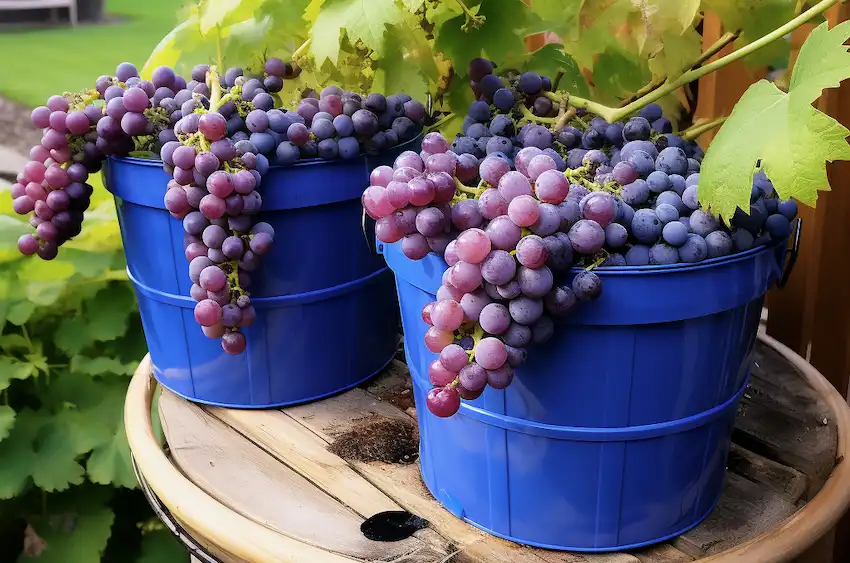

Descubra la práctica gratificante de propagar vides utilizando esquejes podados. Este método tradicional, adoptado por entusiastas de los viñedos y aficionados por igual, permite la preservación de variedades de uva específicas al tiempo que ofrece un enfoque rentable para expandir su viñedo.

Comprender los esquejes de vid:
¿Qué Hace un Buen Corte?
- Los esquejes ideales suelen tener 8-12 pulgadas de largo con 3-4 brotes, tomados de madera saludable de un año.
- El corte superior debe hacerse en un ángulo de 45 grados justo por encima de un brote, y el corte inferior recto, justo debajo de un brote.
Madera dura vs. esquejes de Madera blanda:
- Los esquejes de madera dura se toman durante la latencia a fines del invierno. Son menos propensos a secarse y a menudo tienen una mayor tasa de éxito.
- Softwood cuttings, taken in spring or early summer, root quickly but require more care to prevent drying.
Preparing for Planting:
Timing and Cutting Preparation:
- Late winter, just before bud break, is ideal for taking and planting hardwood cuttings.
- Prepare cuttings by ensuring they are not dried out and have a healthy, green interior.
Using Rooting Hormones:
- Dip the bottom end of the cutting in a rooting hormone powder or solution to stimulate root growth.

Planting the Cuttings:
Soil Requirements:
- Plant in well-drained, fertile soil with a pH of 5.5 to 6.5.
- Prepare the soil by tilling and adding organic matter if necessary.
Planting Method:
- Bury two-thirds of the cutting in the soil, ensuring at least two buds are above the surface.
- Space the cuttings 3-4 feet apart in rows, with rows 8-10 feet apart.
Initial Care:
- Water immediately after planting and mulch to retain moisture.
- In the first few weeks, ensure the soil remains moist but not waterlogged.
Care and Maintenance:
Watering and Fertilizing:
- Regular watering is crucial in the first season. Reduce frequency as vines establish.
- Fertilize lightly after the first few months if growth seems slow, using a balanced fertilizer.
Protection Measures:
- Use physical barriers or netting to protect young vines from animals.
- In colder regions, consider hill-up soil around the base to protect from frost.
Training and Pruning:
Training Young Vines:
- In the first year, focus on developing a strong, straight trunk. Use a stake for support if needed.
- Select the strongest shoot to become the main vine and prune others.
Pruning Techniques:
- In the second year, start training the vine on a trellis system.
- Prune annually in late winter to maintain shape and promote healthy growth.

Troubleshooting:
Disease and Pest Control:
- Regularly inspect for signs of disease or pests. Use organic or recommended treatments as necessary.
- Common issues include powdery mildew, grapevine aphids, and root rot.
Rooting Problems:
- Not all cuttings will take root. Increase success rates by starting more cuttings than needed.
- Ensure cuttings are not planted upside down and that they remain moist after planting.
Harvesting and Beyond:
Expectations for Harvest:
- Typically, grapevines start producing fruit in the third year.
- Las cosechas iniciales pueden ser pequeñas, con un aumento del rendimiento a medida que la vid madura.
Gestión de Viñedos a Largo Plazo:
- La poda regular, las pruebas de suelo y el manejo de nutrientes son clave.
- Monitorear plagas y enfermedades y participar en prácticas sostenibles para la salud de la vid.
Abrace el viaje de cultivo de vides a partir de esquejes. Con paciencia y cuidado, disfrutarás de los frutos de tu trabajo, tanto literal como figurativamente. Esta guía es su primer paso hacia un viñedo próspero.

Fuentes:
Esta guía se compila a partir de recursos expertos en viticultura, incluidos programas de extensión agrícola, viticultores experimentados y textos hortícolas.
Nota: Este artículo es un punto de partida. El clima local, el suelo y la variedad de uva pueden afectar significativamente el proceso de crecimiento. Para obtener asesoramiento específico, consulte a expertos locales en viticultura o servicios de extensión.
